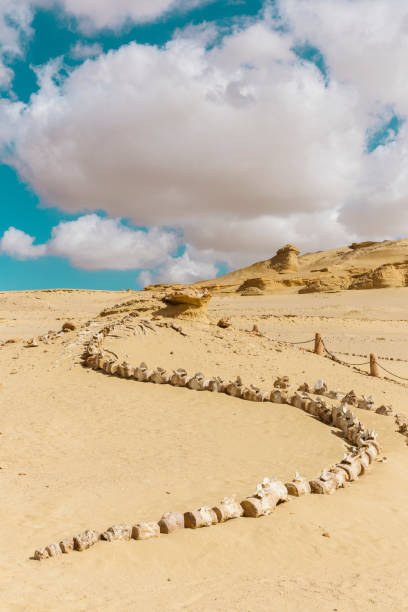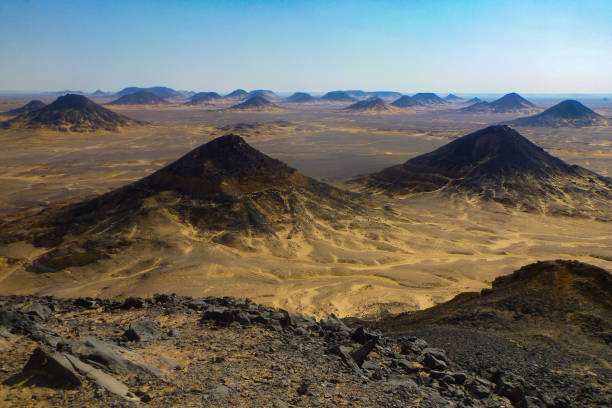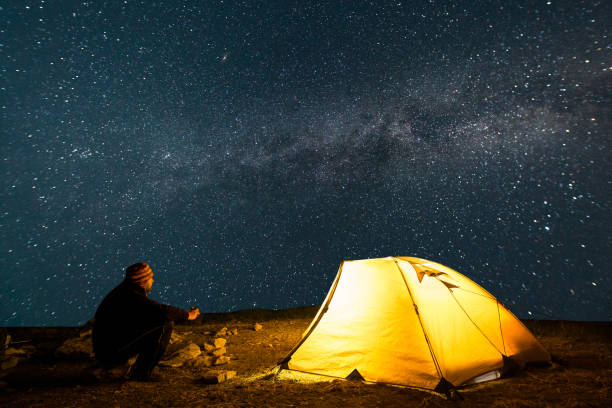Egypt, a land of ancient wonders and mystical landscapes, offers some of the world’s most captivating and diverse tourist destinations. Beyond the famous pyramids and the Nile, Egypt’s oases and tour desert safari reveal a different side of the country’s natural beauty and cultural richness. This article explores the Egypt tourist attractions, focusing on Each location is unique, offering a blend of historical intrigue, stunning scenery, and unforgettable experiences.
Bahariya Oasis Tour:
One of the Egypt tourist attractions is Nestled in the Western Desert, approximately 370 kilometers southwest of Cairo, Bahariya Oasis is a verdant haven surrounded by arid landscapes. Known for its lush palm groves and natural springs, Bahariya is also a treasure trove of archaeological sites and natural wonders.
Egypt tourist attractions in Bahariya Oasis:
The Valley of the Golden Mummies: Discovered in the 1990s, this archaeological site is home to hundreds of mummies dating back to the Greco-Roman period. The mummies are adorned with golden masks and intricate decorations, providing a fascinating glimpse into ancient Egyptian burial practices.
The Temple of Alexander the Great: This temple, built in honor of Alexander the Great, is one of the few known structures dedicated to the Macedonian conqueror in Egypt. It features inscriptions and reliefs that celebrate his legacy.
Hot Springs: Bahariya Oasis is famous for its natural hot springs, such as Bir Sigam and Bir El-Ghaba. These springs are believed to have therapeutic properties, making them popular among locals and tourists.
English Mountain (Gebel al-Ingleez): This mountain offers panoramic views of the oasis and was a strategic lookout point during World War I. It provides a fascinating historical context and a stunning vantage point.
Lake Al-Ma’mour: This serene lake is perfect for bird-watching and relaxing by the water. The lake’s tranquil environment makes it a popular picnic spot for visitors.
Qara Cave: Located in the nearby Qara mountain range, this cave system is filled with impressive stalactites and stalagmites. It is a wonderful adventure for those interested in geology and natural formations.
Suggested Itinerary for Bahariya Oasis:
A four-day trip to Bahariya Oasis can be packed with diverse activities:
- Day 1: Arrival and visit the Valley of the Golden Mummies and the Temple of Alexander the Great.
- Day 2: Explore the hot springs and English Mountain.
- Day 3: Spend a relaxing day at Lake Al-Ma’mour and enjoy bird watching.
- Day 4: Adventure into Qara Cave and then depart.
El Fayum Tour:
El Fayum, the second of the Egypt tourist attractions located about 100 kilometers southwest of Cairo, is one of Egypt’s most fertile regions, known for its lush greenery, ancient ruins, and unique natural formations. This area is often referred to as Egypt’s hidden gem.
Egypt tourist attractions in El Fayum:
- Lake Qarun: One of the oldest lakes in the world, Lake Qarun is a significant bird-watching destination, attracting numerous migratory birds. The lake is also ideal for fishing and boating activities.
- Wadi El Rayan: This nature reserve features two stunning man-made lakes connected by Egypt’s only waterfall. The reserve also has various wildlife species, including the rare slender-horned gazelle.

- The Pyramid of Hawara: Built by the Pharaoh Amenemhat III, this pyramid is known for its labyrinthine underground chambers. Although the exterior has suffered erosion, the internal structure remains a fascinating exploration site.
- Wadi El Hitan (Valley of the Whales): This UNESCO World Heritage site is renowned for its extensive fossil remains of ancient whales, providing a unique insight into the evolution of these magnificent creatures. The valley is a must-visit for nature enthusiasts and paleontology buffs.

Siwa Oasis Tour:
Siwa Oasis, the third of the Egypt tourist attractions located near the Libyan border, is one of Egypt’s most isolated and culturally unique destinations. Renowned for its Berber culture and stunning landscapes, Siwa safari tours offer a serene escape from the bustling cities.
Egypt tourist attractions in Siwa Oasis:
The Temple of the Oracle: This ancient temple, dedicated to the god Amun, was once visited by Alexander the Great. The oracle’s prophecies were highly revered in antiquity, making it a significant historical site.
Cleopatra’s Bath: Also known as “Cleopatra’s Spring,” this natural spring is a popular swimming spot. Legend has it that Cleopatra bathed here, adding a mystique to the experience.

Shali Fortress: Built from kerchief (salt mud), this ancient fortress offers panoramic views of the oasis and surrounding desert. Despite its partial ruins, it remains an iconic landmark of Siwa.
The Black Desert:

the fourth of the Egypt tourist attractions is The Black Desert near Bahariya Oasis is a striking landscape with black volcanic hills and dark rocks. This unique terrain starkly contrasts the typical golden sands of Egypt’s deserts.
Egypt tourist attractions in The Black Desert
- Black Peaks: The desert is dotted with numerous black-topped mountains and hills formed by ancient volcanic activity. These formations craft an eerie and fantastical landscape.
- Crystal Mountain: Located on the way to the White Desert, Crystal Mountain is composed of shimmering quartz crystals. It is a popular tourist stop due to its dazzling appearance and geological significance.
The White Desert:

Adjacent to the Black Desert, The White Desert is famous for its dramatic white chalk rock formations that resemble abstract sculptures. This protected national park offers a surreal and breathtaking environment for visitors.
read more: Wonders of Egypt white desert tour
Egypt tourist attractions in The White Desert:
- Mushroom and Chicken Rock: These iconic rock formations are among the most photographed in the White Desert. Their unique shapes, sculpted by wind erosion, are a highlight of any visit.
- Camping Under the Stars: The White Desert is renowned for its clear night skies, making it an ideal location for stargazing. Many tours offer overnight Egypt camping experiences, allowing visitors to enjoy the serene beauty of the desert at night.

Visiting Dakhla and Kharga Oases:
In addition to the above locations, Egypt’s Western Desert is home to the Dakhla and Kharga Oases, both of which offer unique Egypt tourist attractions.
Dakhla Oasis:
Dakhla Oasis, situated between Farafra and Kharga, is known for its picturesque landscapes and historic sites.
- El Qasr: This ancient Islamic town features mud-brick houses and narrow alleys, offering a glimpse into the past.
- Mut Village: The capital of Dakhla, Mut, is home to hot springs and a local museum showcasing the oasis’s history.
Kharga Oasis:
Kharga Oasis, the southernmost oasis in the Western Desert, is rich in archaeological sites and natural beauty.
- Hibis Temple: A well-preserved temple dating back to the 26th Dynasty, featuring remarkable hieroglyphs and reliefs.
- Bagawat Cemetery: One of the oldest Christian cemeteries in Egypt, with early Coptic tombs and frescoes.
Frequently Asked Questions:
- FAQ 1: What is the best way to get from Cairo to Bahariya Oasis?
- Private Car or Taxi: This is the most convenient and flexible option. The drive takes approximately 4 to 5 hours, covering a distance of about 370 kilometers. Hiring a private car or taxi allows for stops along the way and a more comfortable journey. The Western Desert Travel Company can provide a private car service for you, ensuring a seamless and comfortable trip.
- Bus: There are regular bus services from Cairo to Bahariya Oasis. Buses depart from Cairo’s Turgoman Bus Station and typically take around 5 to 6 hours. This is a more budget-friendly option, but less flexible compared to a private car.
- Organized Tours: Many travel agencies in Cairo offer organized tours to Bahariya Oasis. These tours often include transportation, accommodation, and guided activities, providing a hassle-free way to explore the oasis.
- Additional Travel Tips:
- Book in Advance: Whether you choose a private car, bus, or tour, it’s advisable to book your transportation in advance, especially during peak tourist seasons.
- Comfort Essentials: Ensure you carry essentials like water, snacks, and comfortable clothing for the journey, as services along the route can be limited.
- Local Guides: Consider hiring a local guide upon arrival in Bahariya Oasis to help you explore the areas and the Egypt tourist attractions more effectively.
- FAQ 2: What are the must-see attractions in El Fayum?
El Fayum is a treasure trove of ancient history, boasting a plethora of archaeological sites, museums, and natural wonders. Some of the must-see Egypt tourist attractions include the Fayum Mummy Portraits, the Temple of Qasr Qarun, and Lake Qarun.
- FAQ 3: What is the significance of Siwa Oasis in Egyptian history?
Siwa Oasis is a tranquil retreat nestled in the heart of the Libyan Desert, famous for its stunning natural beauty, rich history, and unique culture. It is said to be the place where Alexander the Great was crowned pharaoh, and the temple of Amun Siwa is a testament to its historical significance.
read more: Siwa Oasis tour from Cairo
- FAQ 4: What is the best time to visit the Black Desert?
The best time to visit the Black Desert is during the cooler months from October to April. During this period, the weather is more comfortable for exploring the desert’s unique landscapes and engaging in outdoor activities.
- FAQ 5: Why Visit During the Cooler Months?
- Comfortable Temperatures: Daytime temperatures are milder, typically ranging from 20°C to 30°C (68°F to 86°F), making it pleasant for hiking and sightseeing. Nights can be cooler, so it’s advisable to bring warm clothing.
- Optimal Light for Photography: The clear skies and softer sunlight during these months provide ideal conditions for photography, highlighting the stunning contrasts of the black volcanic hills and the surrounding desert.
- Less Heat Stress: Visiting during the cooler months reduces the risk of heat exhaustion and dehydration, ensuring a safer and more enjoyable experience.
- Stargazing Opportunities: The cooler nights offer perfect conditions for stargazing, with clear skies and minimal light pollution allowing for an incredible view of the stars.
- FAQ 6: Are there any safety concerns when visiting the black-and-white desert?
Yes, there are some safety concerns when visiting the White Desert. Be sure to stay with a guided tour and follow their instructions, as the desert can be unforgiving. Also, be mindful of the fragile ecosystem and respect the natural environment.
- FAQ 7: Can I camp in the White Desert?
Yes, camping in the White Desert is a popular activity. However, be sure to follow the guidelines and regulations set by the national park authorities, and respect the natural environment.
- FAQ 8: What is the significance of Crystal Mountain in Bahariya Oasis?
Crystal Mountain is a natural wonder in Bahariya Oasis, rumored to have been created when a large meteorite crashed into the earth, melting the rocks into beautiful crystals. It is a unique attraction that showcases the geological history of the region.
- FAQ 9: Are there any local traditions or customs that I should be aware of when visiting these destinations?
Yes, there are local traditions and customs that you should be aware of when visiting these destinations. For example, in Siwa Oasis, it is customary to remove your shoes when entering a mosque or a local’s home. Additionally, respect the local environment and culture, and avoid littering or disturbing the natural habitat.
- FAQ 10: What is the best way to stay hydrated in the desert?
Staying hydrated is crucial when visiting the desert. Be sure to bring plenty of water and electrolyte-rich drinks, and avoid drinking tap water. Also, try to avoid traveling during the hottest part of the day (usually between 11 am and 3 pm).
- FAQ 11: Can I bring my children to these destinations?
Yes, these destinations are suitable for children, but be sure to take necessary precautions to ensure their safety. Bring plenty of water, snacks, and sun protection, and consider hiring a guide or joining a family-friendly tour.
